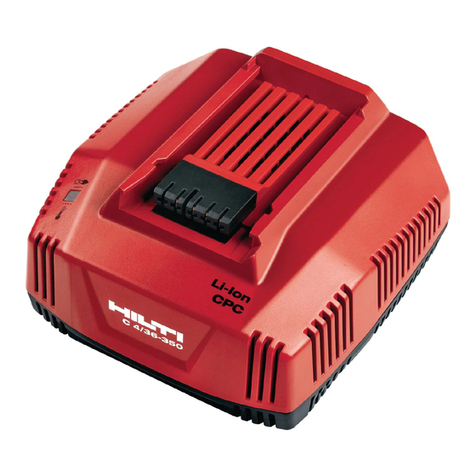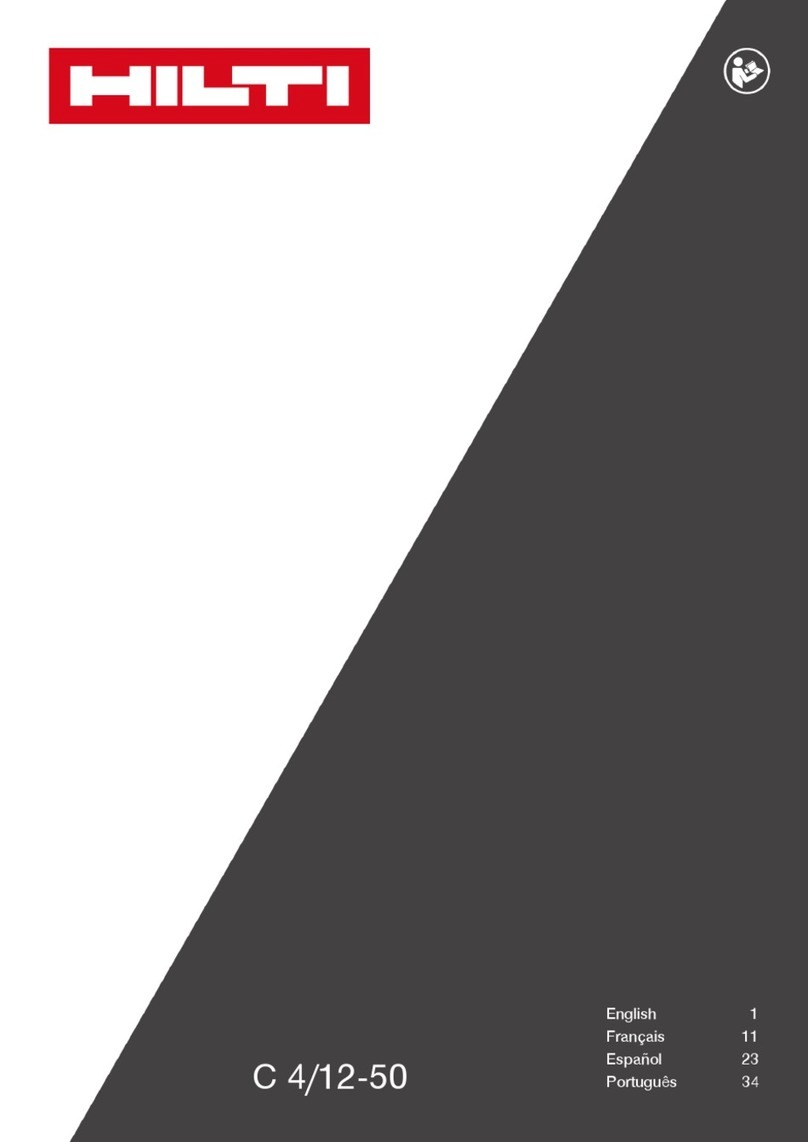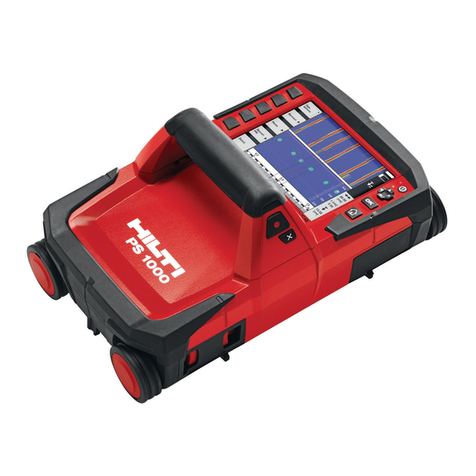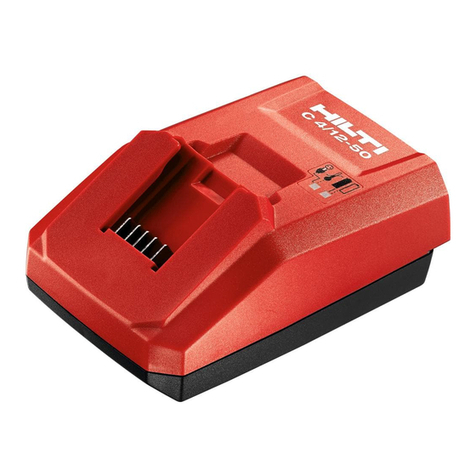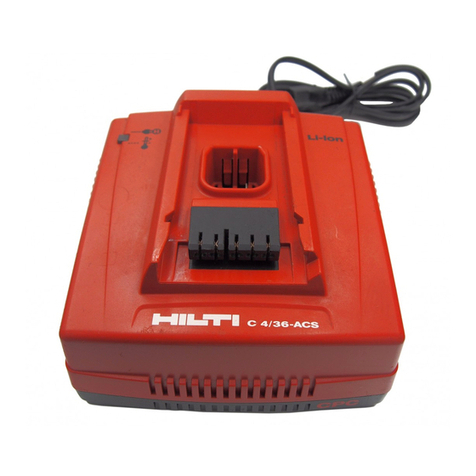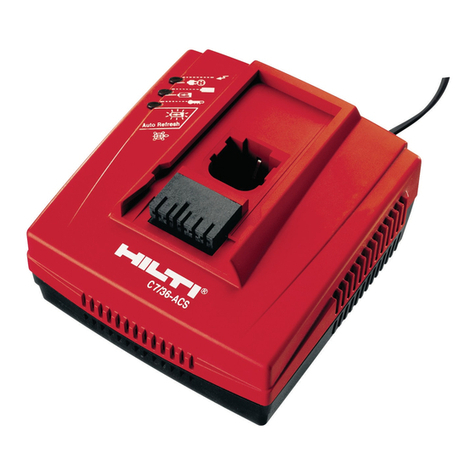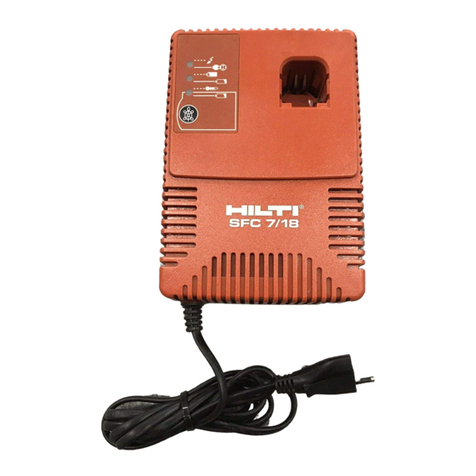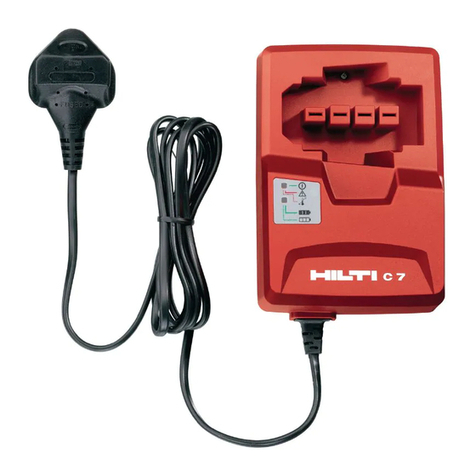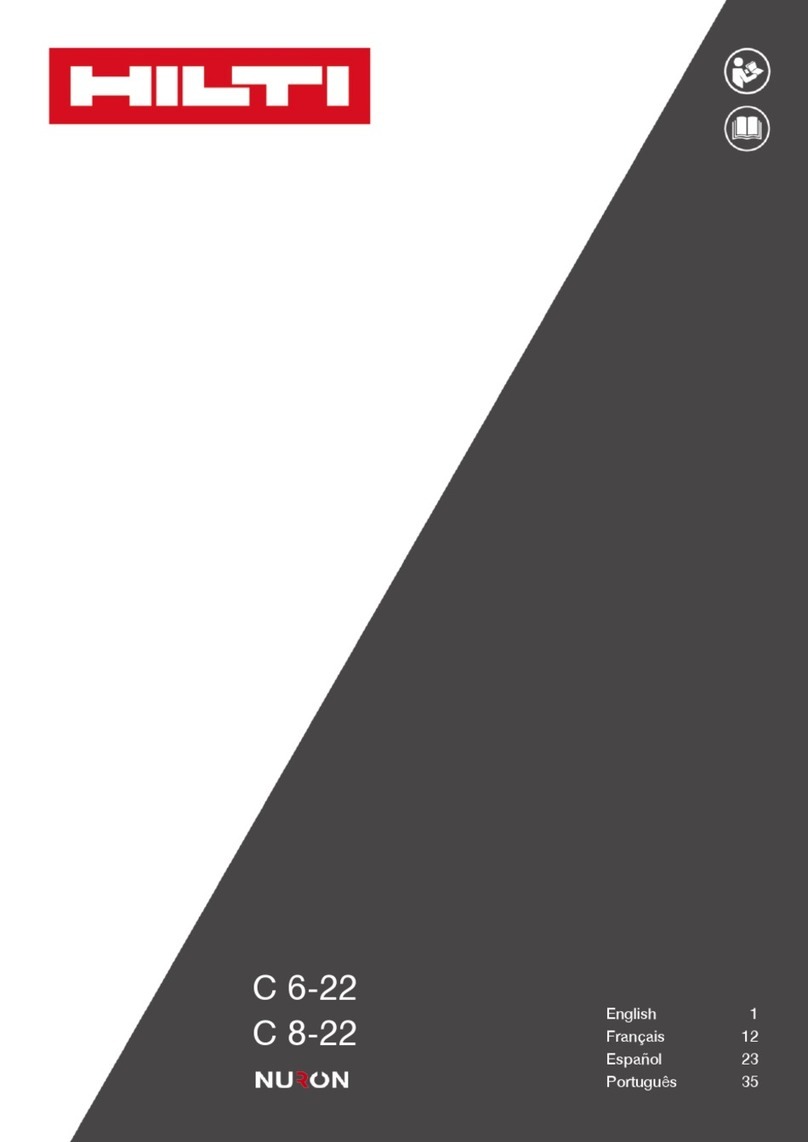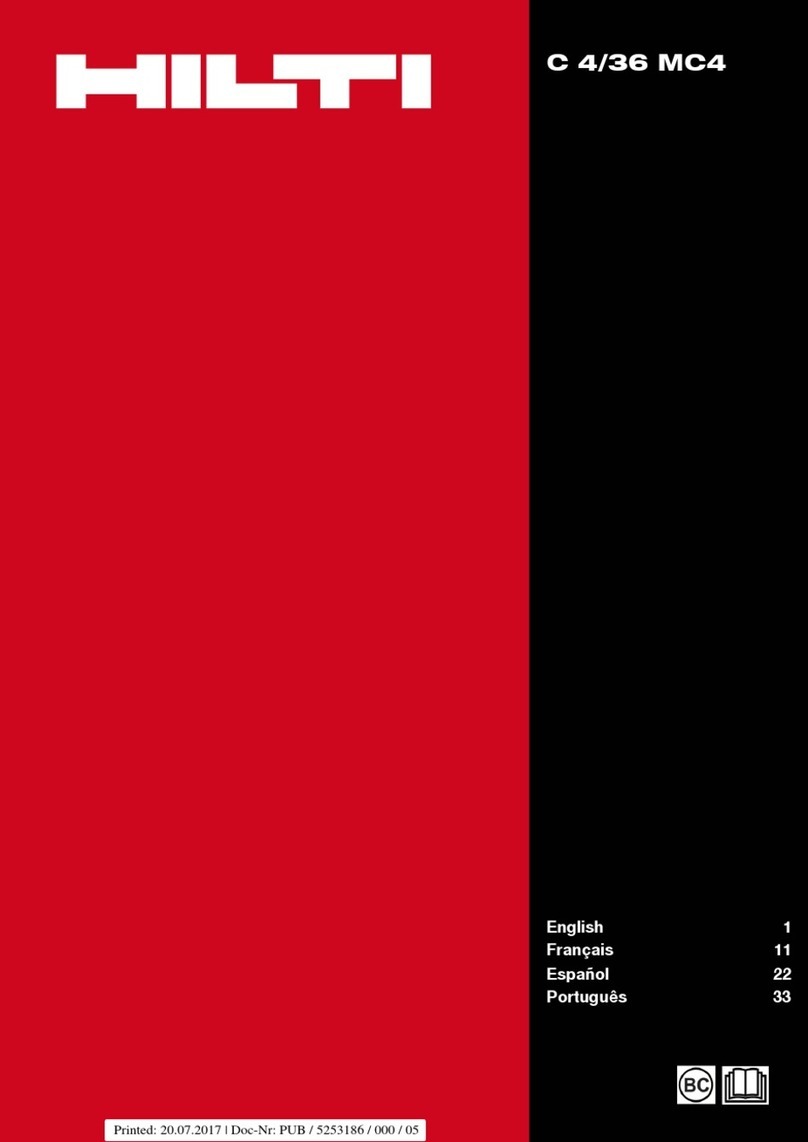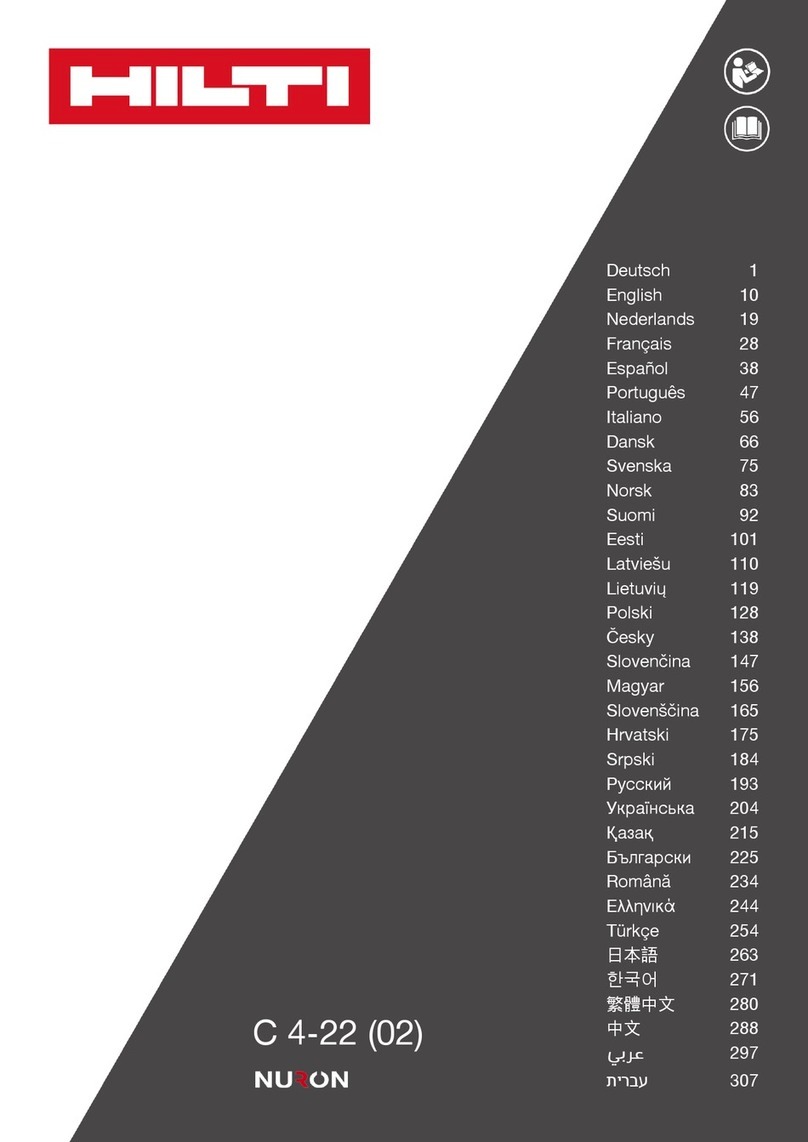
*2114857* 2114857 English 5
2.2 Battery charger use and care
▶To avoid injury, use the charger only to charge Hilti Li-ion batteries
approved for use with this charger.
▶The location at which the charger is used should be clean and cool but
protected from frost.
▶The charger must be able to emit heat while in operation. The air vents
must therefore remain unobstructed. Accordingly, remove the charger
from the toolbox. Do not operate the charger inside a closed container.
▶Maintain the appliance carefully. Check to ensure that no parts are
broken or damaged in such a way that the appliance may no longer
function correctly. If parts are damaged, have the parts repaired before
using the appliance.
▶Use chargers and the corresponding batteries in accordance with these
instructions and as is specified for this particular model. Use of chargers
for applications different from those intended could result in hazardous
situations.
▶Recharge the batteries only with the chargers specified by the manufac-
turer. A charger that is suitable for a certain type of battery may present a
risk of fire when used with other types of battery.
▶When not in use, keep the battery and the charger away from paper clips,
coins, keys, nails, screws or other small metal objects that could cause
a short circuit at the battery terminals or the charging contacts. A short
circuit between the battery terminals or charging contacts may cause
injuries (burns) and result in fire.
▶Under abusive conditions, liquid may be ejected from the battery. Avoid
contact with the liquid. If contact accidentally occurs, flush with water. If
the liquid contacts the eyes, also seek medical attention. Liquid leaking
from the battery may cause irritation or burns.
▶Make sure that the batteries suffer no mechanical damage.
▶Do not charge or continue to use damaged batteries (e.g. batteries with
cracks, broken parts, bent or pushed-in and/or pulled-out contacts).
2.3 Battery use and care
▶Observe the special regulations and instructions applicable to the trans-
port, storage and use of Li-ion batteries.
▶Do not expose batteries to high temperatures, direct sunlight or fire.
▶Do not disassemble, crush or incinerate batteries and do not subject them
to temperatures over 80 °C.
▶Do not use or charge batteries that have suffered mechanical impact,
have been dropped from a height or show signs of damage. In this case,
always contact your Hilti Service.
▶If the battery is too hot to touch it may be defective. In this case, place the
product in a non-flammable location, well away from flammable materials,
Printed: 18.03.2019 | Doc-Nr: PUB / 5253194 / 000 / 07
